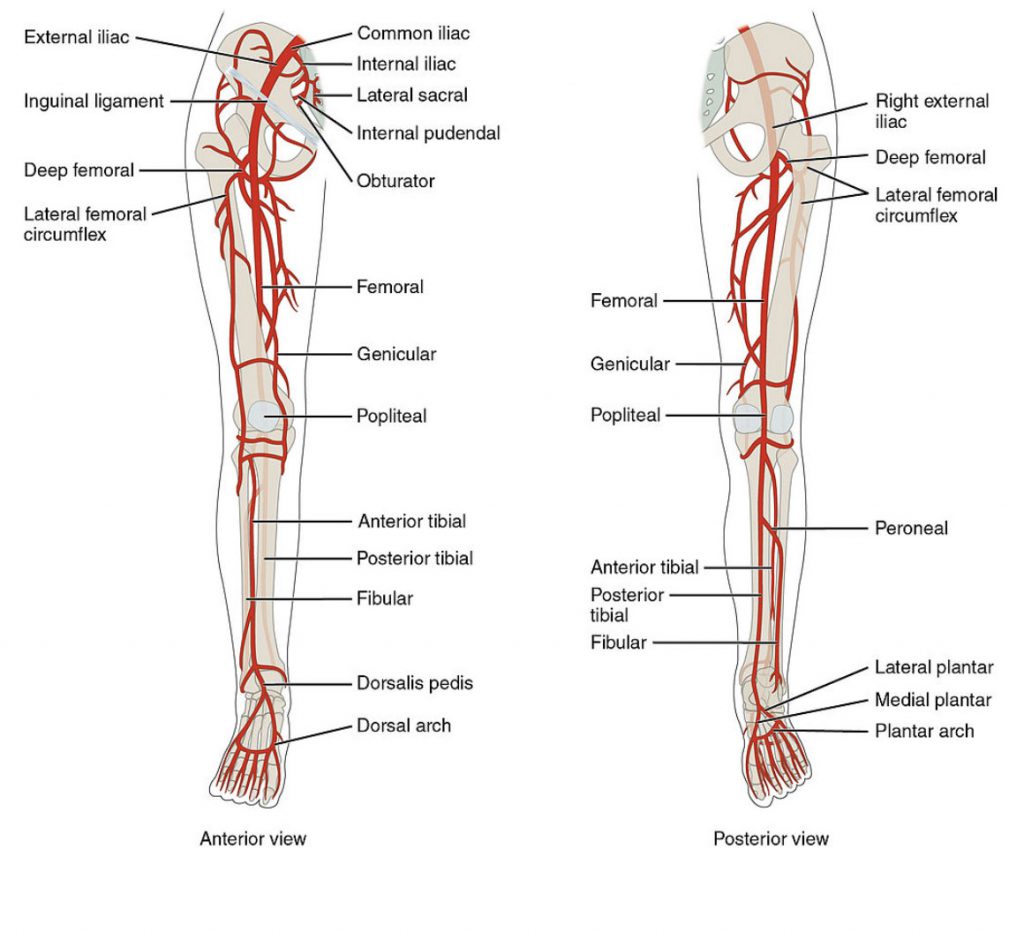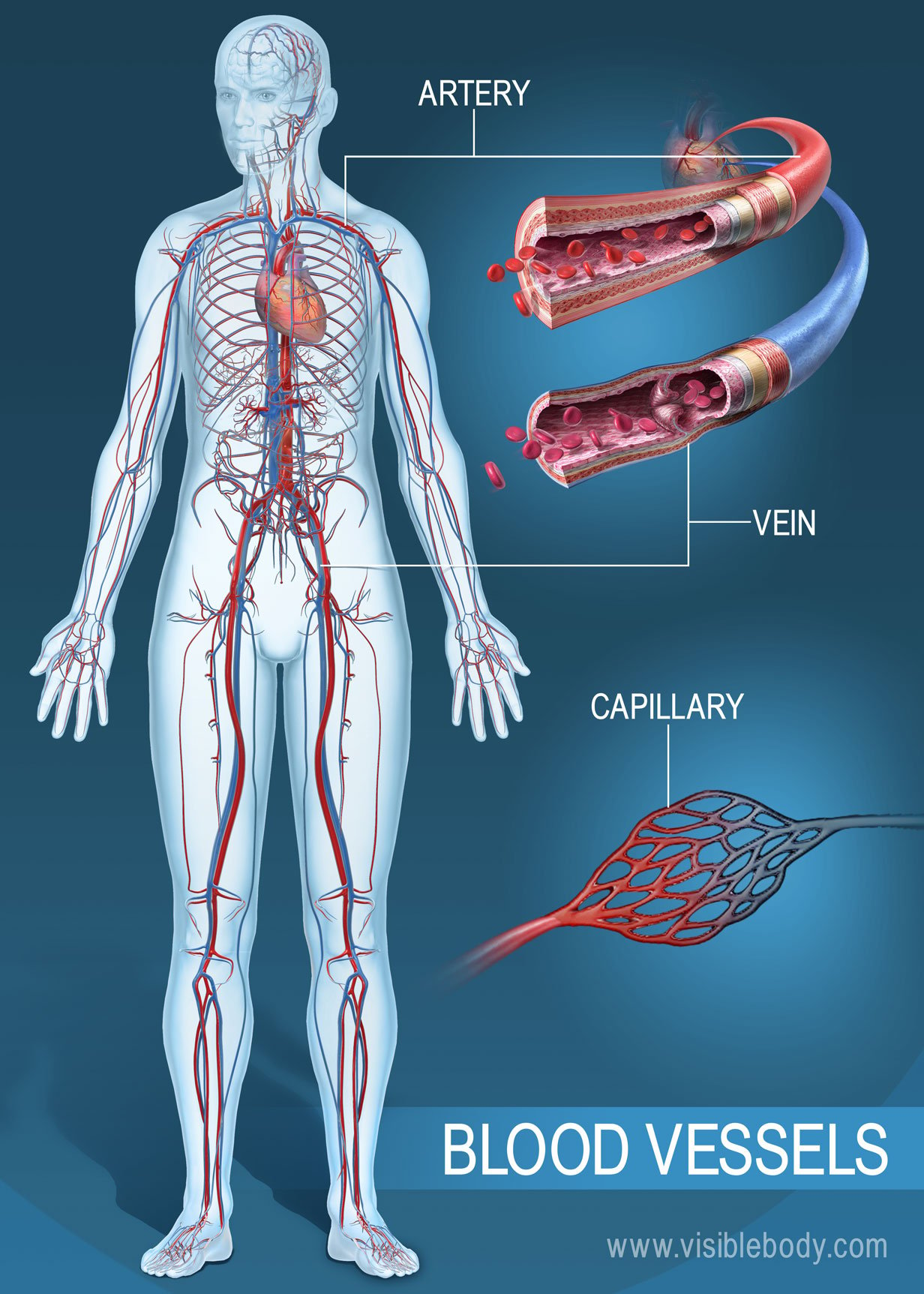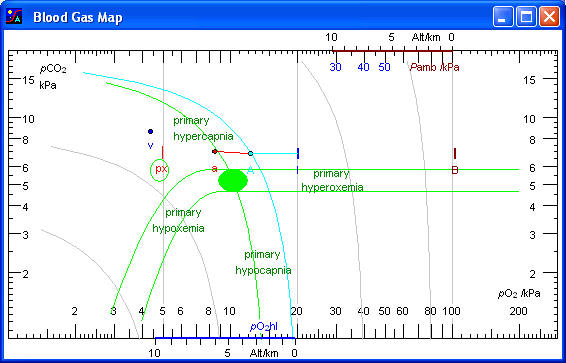41 arterial blood gas diagram
The Importance of Arterial Blood Gas Analysis. 1. Oxygen. 3. Carbon Dioxide and Respiratory Failure. 4. Bicarbonate and Metabolic Imbalance. 5. Respiratory and Metabolic Compensation. The alveolar-arterial gradient is a comparison of the partial pressure of Oâ‚‚ in the alveoli and in arterial blood. ... based on the patient's inspired FiOâ‚‚ and the PCOâ‚‚ from their blood gas result, while the arterial value is the PaOâ‚‚ from the patient's blood gas result. ... Quick diagrams to have the answers, fast ...
The blood flow around the parabronchi and their atria forms a cross-current process of gas exchange (see diagram on the right). The air sacs, which hold air, do not contribute much to gas exchange, despite being thin-walled, as they are poorly vascularised. The air sacs expand and contract due to changes in the volume in the thorax and abdomen ...

Arterial blood gas diagram
The pressure gradient between the arterial and venous end of the pulmonary circulation effects blood flow, but as alveolar pressure can be greater than venous or arterial pressure, this affects blood flow and gas exchange. In the upright posture, the three zones are: Zone 1: (upper area of lungs) Alveolar air pressure greater than either pulmonary arterial and venous pressures, so blood flow ... We collected quantitative indices of nocturnal hypoxemia, patient demographics, medications, pulmonary function tests, as well as arterial blood gas (ABG) data from the night of the PSG. A "blood gas analysis" can be performed on blood obtained from anywhere in the circulatory system (artery, vein, or capillary). An arterial blood gas (ABG) tests explicitly blood taken from an artery. ABG analysis assesses a patient's partial pressure of oxygen (PaO2) and carbon dioxide (PaCO2).
Arterial blood gas diagram. the policy authorizing arterial line sampling may do arterial line sampling. Physician's Orders Sampling will be done at the physician's order or as per the specific ICU protocol. (RT and/ or RN are capable of drawing a blood gas from an arterial line.) Indications Arterial blood gas values may be indicated before and after the start or Arterial Blood Flow Chart Artery Lateral Femoral Circumflex. Author: Tim Plagge Created Date: 4/24/2012 6:44:50 AM ... The pH, base excess and pCO 2 (acid-base status) of arterial blood flowing through the umbilical cord provides valuable objective evidence of the metabolic condition of neonates at the moment of birth; a notion that has assured a role for the blood gas analyzer in hospital delivery suites in cases of suspected fetal distress/asphyxia.. The intended purpose of this review article is to detail ... Goals To obtain a sampling of blood for analysis via the radial artery by puncture using aseptic technique. Guidelines The femoral and brachial arteries shall not be used for arterial puncture unless the physician is obtaining sample. RT is not allowed to obtain a blood gas from the femoral or brachial artery.
Laboratory determination of blood gas analysis (1) The pH of blood : heparinized whole arterial blood ( or heparinized capillary blood ) is used. The pH determination is performed immediately after collection of blood .The blood can be stored at 0-4 ⁰ C up to 2-3 hrs,without significant change in pH . Inhalation of air. Inhalation of air, as part of the cycle of breathing, is a vital process for all human life.The process is autonomic (though there are exceptions in some disease states) and does not need conscious control or effort. However, breathing can be consciously controlled or interrupted (within limits). expired air, arterial blood, or venous blood, can be plotted on this diagram. It will be appreciated at the end of this discussion that 1) there are certain physical limits to what combinations of O 2 and CO 2 can exist in the alveolus and, therefore, the blood; and 2) even if arterial blood gases are the only available An arterial blood gas is a laboratory test to monitor the patient's acid-base balance. It is used to determine the extent of the compensation by the buffer system and includes the measurements of the acidity (pH), levels of oxygen, and carbon dioxide in arterial blood. Unlike other blood samples obtained through a vein, a blood sample from an ...
The process of analysis and monitoring of arterial blood gas (ABG) is an essential part of diagnosing and managing the oxygenation status and acid-base balance of the high-risk patients, as well as in the care of critically ill patients in the Intensive Care Unit. ... Flow diagram showing approach to hypoxemic respiratory failure ... Lactate is produced via pyruvate metabolism under anaerobic or aerobic glycolytic conditions. In the presence of adequate oxygen and mitochondrial capacity, pyruvate is normally converted to acetyl CoA which then enters the Krebs cycle. In the absence of oxygen or in the presence of excessive glycolysis, pyruvate is shunted into lactate ... Taking an arterial blood gas (ABG) involves using a needle and syringe to directly sample blood from an artery (typically the radial artery). Below is a step-by-step guide to taking an arterial blood gas sample in an OSCE setting, with an included video demonstration. Components of the Arterial Blood Gas The arterial blood gas provides the following values: pH Measurement of acidity or alkalinity, based on the hydrogen (H+) ions present. The normal range is 7.35 to 7.45 Remember: pH > 7.45 = alkalosis pH< 7.35 = acidosis PO2 The partial pressure of oxygen that is dissolved in arterial blood.
Arterial blood collection: sampling and storage - part 2 of 2. by S. B. Blonshine. Quality assurance Blood gases/acid-base. The collection of arterial specimens with glass syringes and immediate storage in iced water was the accepted industry standard for many years. Practice has changed over the past several years to blood gas sample ...
The Davenport diagram shows that shifts in pH at various levels of arterial carbon dioxide tension (P a CO 2) with, A, normal bicarbonate concentrations, B, increased carbonic acid levels, C, decreased carbonic acid levels in the blood. The line connecting the points is the buffer line for arterial blood.
An arterial blood gas (ABG) test measures the amounts of arterial gases, such as oxygen and carbon dioxide.An ABG test requires that a small volume of blood be drawn from the radial artery with a syringe and a thin needle, but sometimes the femoral artery in the groin or another site is used. The blood can also be drawn from an arterial catheter.. An ABG test measures the blood gas tension ...
Nanduri R. Prabhakar, in Chemosensory Transduction, 2016 Blood Flow and O 2 Consumption. Arterial blood supply to the carotid body is derived from branches of internal and external carotid, the occipital, and the pharyngeal arteries. The carotid body has high blood flow for its volume, which ranges between 1000 and 2000 ml/min/100 g of tissue weight, which 25-28 in terms of weight of the ...
A simple diagram for arterial blood gas tensions was constructed from values obtained from normal volunteers at rest, during voluntary breath-holding and during maximal voluntary hyperventilation. Thus, an appropriate arterial oxygen tension (PaO 2) was established for any physiologic level of alveolar ventilation, as reflected by the arterial ...
Here blood picks up oxygen and loses another gas called carbon dioxide. Once through the lungs, the blood flows back to the left atrium. It then passes into the left ventricle and is pumped into the main artery (aorta) supplying the body. Oxygenated blood is then carried though blood vessels to all the body's tissues. Here oxygen and other nutrients pass into the cells where they are used to ...
A simple diagram for arterial blood gas tensions was constructed from values obtained from normal volunteers at rest, during voluntary breath-holding and during maximal voluntary hyperventilation. Thus, an appropriate arterial oxygen tension (PaO2) was established for any physiologic level of alveolar ventilation, as reflected by the arterial carbon dioxide tension (PaCO2).
Master arterial blood gas analysis based on an understanding of relevant physiologic principles. You'll cover crucial factors that determine oxygenation of blood in the lungs, and oxygen transport and delivery to peripheral tissues. Learn about the interplay between blood gas and acid-base analysis and how carbon dioxide affects arterial pH.
An arterial blood gases (ABG) test is a blood test that measures the acidity, or pH, and the levels of oxygen (O2) and carbon dioxide (CO2) from an artery. The test is used to check the function of the patient's lungs and how well they are able to move oxygen into the blood and remove carbon dioxide.
umbilical cord blood gases. ... Arterial or Venous or Both pH of the vein will always be higher than the artery (0.02) pCO2 of the vein will always be lower than the artery Arterial vs. Venous Sample Umbilical cord arterial pH is a measure of the fetal condition at birth
Specimen Collection - Arterial Blood Gas The primary responsibility of a phlebotomist is to collect blood for laboratory analysis, which is necessary for diagnosis and care of the patient. Collection of a quality specimen is the first step in providing an accurate test result.
Interpretation of Arterial Blood Gases (ABGs) David A. Kaufman, MD Chief, Section of Pulmonary, Critical Care & Sleep Medicine Bridgeport Hospital-Yale New Haven Health Assistant Clinical Professor, Yale University School of Medicine (Section of Pulmonary & Critical Care Medicine) Introduction: Interpreting an arterial blood gas (ABG) is a crucial skill for physicians, nurses, respiratory ...
An Arterial Blood Gas Diagram for Clinical Use* Edward E. Mays, Lt Col, USA, MC, F.C.C.P. o o A simple diagram for arterial blood gas tensions was constructed from values obtained from normal volunteers at rest, during voluntary breath-holding and during maximal voluntary hyperventilation. Thus, an appropriate arterial oxygen
Label the diagram showing the three forms in which CO2 is transported in the blood. Analyze the graphs, which demonstrate the effects of acute exercise on arterial blood gases and pH. Then, determine whether the statements are true or false.
Arterial Blood Gas Analysis: Example Set 1. Case A. A patient is brought back to the floor from the operating room on a patient controlled analgesia (PCA) pump with hydromorphone. The patient hits his PCA button several times in the first hour. Shortly thereafter, the nurse walks in the room and finds him somnolent and difficult to arouse.
A "blood gas analysis" can be performed on blood obtained from anywhere in the circulatory system (artery, vein, or capillary). An arterial blood gas (ABG) tests explicitly blood taken from an artery. ABG analysis assesses a patient's partial pressure of oxygen (PaO2) and carbon dioxide (PaCO2).
We collected quantitative indices of nocturnal hypoxemia, patient demographics, medications, pulmonary function tests, as well as arterial blood gas (ABG) data from the night of the PSG.
The pressure gradient between the arterial and venous end of the pulmonary circulation effects blood flow, but as alveolar pressure can be greater than venous or arterial pressure, this affects blood flow and gas exchange. In the upright posture, the three zones are: Zone 1: (upper area of lungs) Alveolar air pressure greater than either pulmonary arterial and venous pressures, so blood flow ...




![Arterial Blood Gas (ABG) analysis - [PPTX Powerpoint]](https://reader012.vdocuments.site/reader012/slide/20180814/5889e1a01a28ab83478b721b/document-50.png?t=1592591548)





























![Arterial blood gas interpretation - [PPT Powerpoint]](https://static.fdocuments.in/img/1200x630/reader011/image/20190301/58d19adb1a28ab6f6b8b4e13.png?t=1592312076)
0 Response to "41 arterial blood gas diagram"
Post a Comment